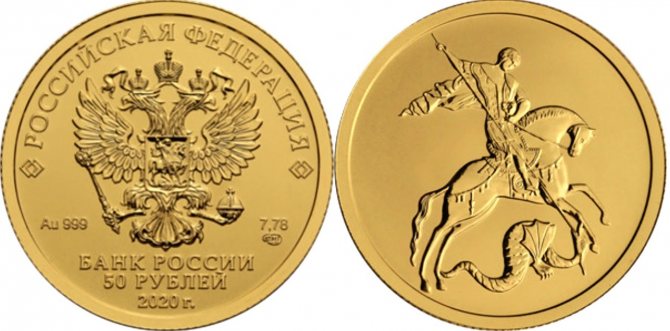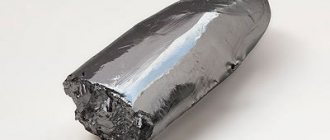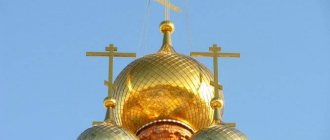Georgy, Yuri, Egory Brave
The veneration of the Holy Great Martyr George in the Russian lands was established almost immediately after the adoption of Christianity. The son of the baptizer of Rus', Prince Yaroslav the Wise, took the name of this saint at baptism. In honor of his heavenly patron, in the 30s of the 11th century, the prince founded two monasteries - in Kyiv and Veliky Novgorod. The latter has survived to this day. In memory of this, two holidays appeared in Rus': Yegoriy Veshny (May 23, Old Style) and Yegoriy Osenniy (November 26, Old Style).
The first was especially revered by shepherds, cattle breeders and herdsmen. St. George was considered the patron saint of domestic animals, a protector from wolves and poisonous snakes.
The second holiday is better known to us as St. George's Day. The same one in which peasants were allowed to move from one master to another. However, guarding livestock was not the most important “work” of St. George. Patronage of soldiers and defense of the faith of Christ was considered much more significant.
The spiritual verse of the first half of the 16th century sets out the plot of the confrontation between Yegory (George) the Brave and the “basurman king Demyanishch.” In essence, this is a free presentation of the canonical life of the saint in the epic style. Demyanishche (Emperor Diocletian), captures Yegor and throws him into prison for 30 years. The Mother of God helps the warrior to free himself. He returns to his homeland, wins Demyanishche in a duel and saves Rus' from infidelity. For several hundred years, this story fed many fair singers and actors. And this is not surprising. The acts of St. are very similar. Egoria on the adventures of Ilya Muromets. And we love heroes.
And yet the most striking achievement of the saint was the fight with the dragon. The story of how George defeated the winged serpent that was rampaging near Beirut and saved the daughter of the local king from its gastronomic claims inspired more than one generation of glorious knights to heroic deeds. Moreover, not only in Rus', but also in Asia and, of course, in Europe.
The image of the righteous knight-snake fighter very soon became a popular heraldic image and was firmly established on the coats of arms and banners of noble warriors. And then he confidently migrated to numismatics.
St. George the Victorious and penny money
Russian coins with the image of a horseman with a spear have been known since the end of the 14th century. The son of Dmitry Donskoy, Prince of Moscow Vasily Dmitrievich, ordered the minting of dengue with an equestrian warrior and a dragon in the period from 1393 to 1403. His brother Yuri Zvenigorodsky, having taken the grand-ducal throne in 1433, continued this tradition. A tiny silver dengue from his reign clearly shows a horseman with a spear slaying a snake. But to say with certainty that this is St. George, you can't.
Controversy still rages in scientific circles. Some experts claim that on the coins there is a book. Zvenigorodsky and Galitsky Yuri really depict the Victorious. In this way the prince honored his heavenly patron. Others offer compelling counterarguments. One of the versions is that the spearman personifies the Moscow Principality, and the snake personifies the weakened Horde, they say, know ours! Around the same time, Novgorod had its own coin with a similar image.
But numismatists are not inclined to see the Novgorod spearman as the hero of this article. The fact is that a warrior with a spear was depicted not only on horseback, but also on foot. In addition, not all coins have a winged reptile. Adding fuel to the fire of controversy is one more fact that cannot be ignored. The mother of Ivan IV the Terrible, Princess Elena Glinskaya, carried out a monetary reform, as a result of which on March 20, 1532, a new monetary unit appeared in the Moscow principality - the penny. The coin took root. And subsequently it became the main unit of exchange.
It is generally accepted that the rider on the Moscow coin is not a saint at all, but a prince. This is supported by the description of the reign of Ivan the Terrible, in which the chronicler clearly indicates this.
“... the great prince Ivan Vasilyevich raised a banner on the money, the great prince was on horseback, and having a spear in his hand, from then on it was called penny money”©
But there is another hypothesis. Briefly, it suggests the following: since in those days there were no strict canons for images on coins, the engraver specially “tailored” the equestrian portrait of the Grand Duke to the image of St. George the Victorious. The main argument in favor of this version is the fact that by that time Georgy Zmeeborets was the official patron saint of Moscow and, de facto, one of the heraldic emblems of the principality. And the victory in the war with the Kazan Khanate fits perfectly into the story of the victory over the serpent. The winged dragon was the emblem of the Khanate and was depicted on its battle flags.
Description of coins
3 rubles were made from 999 standard silver. The diameter of the coin is 39.0 mm. The circulation is 500,000 pieces.
Gold 50 rubles have a diameter of 22.60 mm. The coin was also issued in a circulation of up to 500,000 thousand copies.

Both coins have a grooved edge. Banknotes are made in “AC” quality. On the reverse there is an image of St. George the Victorious on horseback, slaying a serpent with a spear.
St. George the Victorious on imperial coins
The mounted dragon slayer, which is an image of St. George, appeared on Russian coins of the imperial period during the reign of Anna Ioannovna. It was then that the image of the Small State Coat of Arms appeared on the reverses of Russian coins, the obligatory attribute of which was the heraldic shield of the Moscow kingdom with the image of a dragon slayer.
An important feature is that now George is minted not only on kopecks, but also on silver and gold rubles. During this period, experiments continued with the types of images of the saint. The heraldic orientation of the figure changes - to the right on coins issued before 1859 and to the left on those minted after, until 1917. This is due to the adoption of the new State Emblem of Russia.
In addition, there are differences in small details such as:
- warrior helmet shape;
- horse pose (angry, playing);
- the presence or absence of a cloak on the rider, etc.
The coat of arms is also changing. On various coins of the imperial period, the figure of St. George the Victorious is inscribed in shields of the French, German and English types.
Mints
Coins were produced in Russia at several yards:
- at the Moscow Mint (MMD, Red Mint);
- at the Yekaterinburg Mint (EMD);
- at the St. Petersburg Mint (SPMD);
- at the Sestroretsk Mint (SMD).
We advise you to watch: the history of Russian mints.
Summarized material on different types of coins is given in the table below. The differences for SPMD and SMD have the same characteristics, since stamps were not produced in Sestroretsk, but St. Petersburg stamps were used.
| Mint | Characteristic features |
| edge | |
| MMD | In 1757 - the denomination is at the top, the edge is with a large mesh, the circle is thin and of increased diameter (re-coined). In 1757-1760 – the denomination at the bottom, with a thin circle of increased diameter, edges with a large mesh (re-coined from the crosses) and the inscriptions MMD and the Yekaterinburg Court (re-coined from the clouds). For a thick mug of small diameter, the edge is either with a coarse mesh or smooth. |
| EMD | 1757-1762 – the denomination at the bottom, with a thin circle of increased diameter, edges with a large mesh (re-coined from the crosses) and the inscriptions MMD and the Yekaterinburg Court (re-coined from the clouds). For a thick mug of small diameter, the edge is with a fine mesh, smooth, or with an inscription (1957) 1757-1760 - denomination at the top, edge with a fine mesh or the inscription of the Yekaterinburg Court. |
| SPMD | 1757 – denomination at the top, with a thin circle of increased diameter, an edge with a coarse mesh (re-coined from the cross coins). 1757 -1759 – the denomination at the bottom, with a thin circle of increased diameter, edges with a large mesh (re-coined from the crosses) and the inscriptions MMD and the Yekaterinburg Court (re-coined from the clouds). |
| SMD | 1757-1758 – denomination at the bottom, edges with a large mesh (re-coinage of the Swedish era). |
| Crown | |
| MMD | 1757-1758 – narrow crown, the stone is located at the level of the crown cut. 1757-1760 – a wide crown with a protruding rim and a depressed stone. There is a variety with 4 stones along the rim. |
| SPMD (SMD) | 1757 – narrow crown with a stone above the cut of the crown, 3 stones along the rim. 1757-1759 – wide crown, stone at the level of the crown cut, 5 stones along the rim. |
| EMD | The stone is slightly below the crown cut. |
| Top left petal on a branch | |
| MMD | The petal is obtuse, with a notch at the bottom. There are coins from 1757 where the petal is directed to the side. |
| SPMD (SMD) | The petal is sharp, with a notch at the bottom. |
| EMD | The petal at the bottom is without a notch. |
| Monogram | |
| MMD | The number “1” is close to the berry on the branch of the wreath. Reduced distance between monogram curls, so that the numbers “do not go through” (in most cases). 1757-1758 – lower curls overlap to the right. 1757-1760 – lower curls with an overlap to the left. |
| SPMD (SMD) EMD | The number “1” is removed from the berry on the wreath branch. Increased distance between the curls of the monogram, so that the numbers “go through”. The lower curls only overlap to the left. |
| Number "1" | |
| MMD | The top is slightly inclined, the bottom is jackdaw-shaped with a curved right edge. |
| SPMD (SMD) | The top has a large slope, the bottom is jackdaw-shaped without bending the right edge. |
| EMD | The top is horizontal, the bottom is jackdaw-shaped with an elongated bend on the left edge. |
| Number "7" | |
| MMD | The vertical line of the seven has straight lines with a rounded lower tail. |
| SPMD (SMD) | Straight bevel on the top left edge. |
| EMD | The vertical line of the seven has rounded lines with a lower tail without rounding. |
| Number "5" | |
| MMD | 1757 – tail rounded upward; with a horizontal tail there is a large lower bend. 1758 - rounded horizontal tail with a large lower protrusion. |
| SPMD (SMD) | Horizontal tail with a large lower bend. |
| EMD | 1757 – the tail is directed upward, there is a large protrusion of a vertical line; 1758-59 – straight short upper tail, vertical line with a slope. |
| Number "8" | |
| MMD | Figure eight with an overlap to the right. |
| SPMD (SMD) EMD | The figure eight consists of two connected rings. |
| Horse | |
| MMD | The snaffle is located between the head and neck. The bend line of the front leg runs along the medallion. The forearm is narrow (1757) and wide (1757-1760). The slope of the tail is gentle, the croup is flat (1757-58), the croup is convex (1757-60). |
| SPMD (SMD) | The snaffle is located between the head and neck. The bend line of the front leg passes above the medallion. The forearm is narrow. The end of the tail is steeply sloping, the tip of the tail is sharp. |
| EMD | The snaffle is located on the neck. The bend line of the front leg passes above the medallion. Medallion in the form of a ring. The slope of the tail is gentle. |
| Rider | |
| MMD | Landing with tilt (1757), without tilt (1757-60). Left fist with fingers. On a spear, the palm is turned sideways (1757), the palm is turned up (1757-60). There is a cross on the saddle, but there are coins from 1757 without the cross. |
| SPMD (SMD) | Tilt landing. Left fist without fingers. On a spear, the palm is turned sideways. There is a cross on the saddle. |
| EMD | The difference from the SPD is that the spear has a knob. |
To more accurately determine at which mint a coin was minted, you need to use a combination of distinctive features.
Many of these features vary in appearance due to the large number of mintages and coinage technology. Stamps often became unusable, and new ones had to be made or old ones repaired.
St. George the Victorious on Russian coins
After the collapse of the USSR, the image of St. George reappeared on Russian coins. Moreover, not only on exchange, but also on investment. Let's start with them. Gold investment coins “St. George the Victorious” appeared in 2006. The reason for their release was that by the beginning of the 2000s, the reserves of Soviet gold chervonets “Sower” had significantly thinned out. The new gold coin is minted in two denominations - 50 and 100 rubles from 900 fine metal, weighing 7.89 g and 15.72 g, respectively.
In total, from 2006 to 2015, more than 27,000 kilograms of pure gold were used to produce these coins, making them the most widespread in the entire history of Russia. In addition, since 2009, the Bank of Russia began minting a silver coin with a face value of 3 rubles and weighing 1 troy ounce (31.1 g), which has investment status.
Change coins with the image of a horseman slaying a dragon began to be minted en masse in modern Russia in 2016, after the approval of their new edition with the State Emblem of the Russian Federation. Let's hope this is a good sign.
Purchasing investment coins from a bank
In most Russian banks today you can purchase coins in investment and collection quality. The list of these credit institutions can be read on the Internet resource of the Central Bank of the Russian Federation. Let us remind you that there are mostly negative reviews about purchasing coins made of precious metals from Sberbank.
Advantages of purchasing coins through a bank:
- You can pay for your purchase by credit card without commission;
- The necessary documentation and price receipts are always provided;
- competition with dealers forces banks to sometimes organize sales at the best prices and drawings;
- Special services and prices are provided for wholesale buyers;
- the assortment of coins of some banks can include up to hundreds of copies.
Disadvantages of purchasing coins through a bank:
- To purchase coins, you must have a passport;
- depending on the institution, the choice can be both great and negligible;
- large banks set extortionate prices, so it is better to buy from medium and small credit institutions;
- in the documentation, bank employees often put the nominal value rather than the purchase price of the copy, which makes it difficult to obtain tax deductions;
- It will not always be possible to hand over the purchase to the same bank, or the difference between the purchase and repurchase prices can be up to 50%, as is the case with Sberbank.











